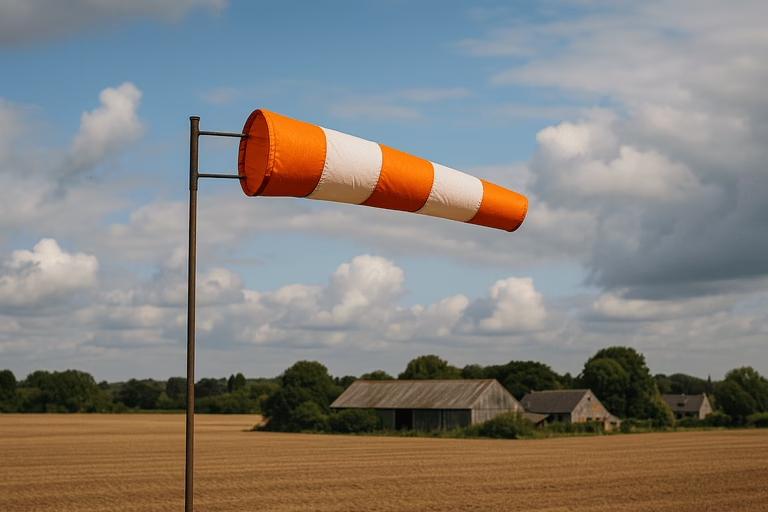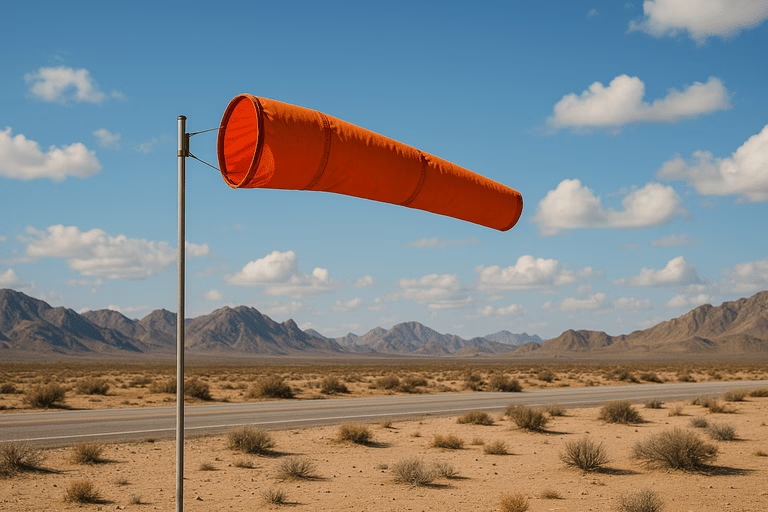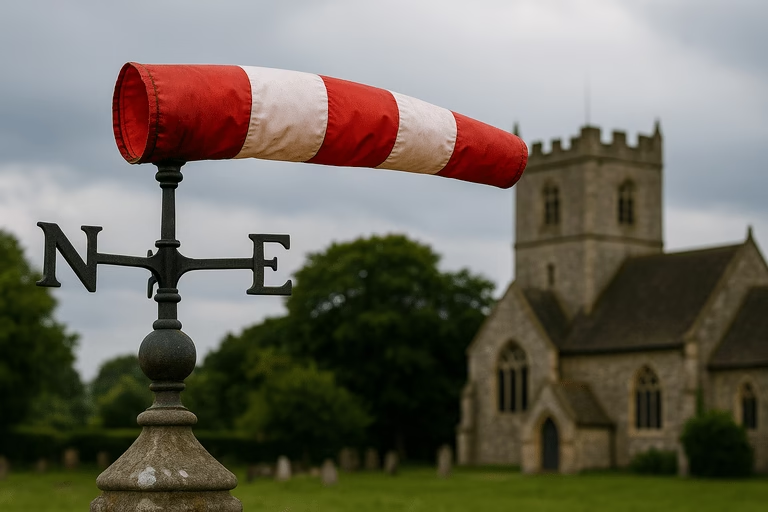Knowing which way, the wind blows is more than a poetic phrase—it’s essential for safety, strategy, and science. A wind direction indicator plays a vital role in aviation, agriculture, construction, and outdoor recreation. From simple weathervanes to advanced digital sensors, these devices help professionals and enthusiasts make informed decisions based on accurate environmental data.
Whether you’re managing an airport runway, setting up a drone flight, planning a hike, or spraying crops, understanding wind direction is non-negotiable. In this guide, we’ll explore the types of indicators, how they work, where to install them, and why they matter more than ever in our rapidly changing climate.
Different Types of Wind Direction Indicators and How They Work
There are several types of wind direction indicator tools available, each designed to meet specific needs. The most traditional example is the weather vane, which spins on a fixed axis to point in the direction the wind is coming from. However, modern options include windsocks, flag systems, and electronic weather stations equipped with digital sensors.
Directions of Compass for Navigation Mastery
For instance, a windsock—commonly seen at airports and helipads—indicates both direction and relative wind speed. Meanwhile, digital indicators use ultrasonic or magnetic sensors to provide real-time data to meteorological apps or control panels. Regardless of the model, the primary function is the same: to give users immediate, clear information about wind behavior in a given area.

Key Industries That Rely on Wind Direction Indicators
While it’s easy to assume a wind direction indicator is mainly used by meteorologists, its applications span many sectors. In aviation, pilots depend on wind data to ensure safe takeoffs and landings. In agriculture, wind direction helps determine when and where to spray pesticides or irrigate fields. Even in sports—like sailing, skydiving, or paragliding—wind direction is critical for safety and performance.
In addition, wind indicators are used on construction sites to protect crane operators and workers from hazardous gusts. Firefighters also rely on wind direction to predict the movement of wildfires and plan their approach. Therefore, it’s no exaggeration to say that these devices save lives and optimize operations daily across multiple disciplines.
Choosing the Right Wind Direction Indicator for Your Needs
Selecting the ideal wind direction indicator depends on several factors, such as the intended use, location, accuracy requirements, and budget. For example, a homeowner might prefer a decorative weather vane on their roof, while a drone pilot may opt for a handheld digital unit.
Nature Tips for Safe and Enjoyable Adventures
In professional environments, precision is paramount. Airports typically use calibrated windsocks made from weather-resistant fabric, while remote weather stations might install high-tech ultrasonic anemometers. Furthermore, some indicators combine wind direction with speed and temperature data for a more comprehensive overview. The key is to choose a device that delivers reliable results under your specific conditions.
Proper Installation and Placement Tips
Correct placement significantly affects the performance of any wind direction indicator. For accurate readings, the indicator must be installed at a height free from obstructions like buildings, trees, or walls that can create wind turbulence or block airflow. Ideally, it should be mounted on a mast, rooftop, or pole in an open space.
For best results, place the indicator at least 10 feet above the ground and away from artificial wind sources like fans or HVAC exhausts. Calibration is also important—especially for digital models. Align the device with true north before activating, and check it regularly to ensure it’s functioning correctly. Proper installation leads to consistent, trustworthy data that you can depend on.

Advantages of Using Wind Direction Indicators
Utilizing a wind direction indicator offers a variety of benefits that go far beyond simple convenience. For one, it allows for proactive decision-making. For example, a farmer can adjust their spraying schedule to minimize chemical drift, while a construction manager can pause crane operations if crosswinds reach unsafe levels.
Atlas Survival Shelter Prices: A Comprehensive Guide
In addition, it enhances safety by providing real-time visual or digital feedback that allows users to respond to changing conditions quickly. Energy companies, particularly those involved in wind power, use these indicators to optimize turbine alignment. The ability to adapt to environmental factors is a major advantage in both commercial and recreational settings.
Innovations in Wind Measurement Technology
Modern technology continues to revolutionize the traditional wind direction indicator. Today’s smart indicators can connect to apps, deliver data to cloud-based dashboards, and even integrate with automated weather stations. Ultrasonic sensors have replaced moving parts in many devices, improving durability and reducing maintenance.
Additionally, some systems offer solar-powered functionality, GPS integration, and Wi-Fi or Bluetooth connectivity. These features make it easier than ever to monitor wind conditions remotely and in real time. As a result, users gain more precise, data-driven insights that enhance performance, safety, and efficiency across the board.
Environmental Monitoring and Research Applications
Beyond commercial and industrial uses, a wind direction indicator plays a vital role in scientific research and environmental monitoring. Researchers studying air pollution, bird migration, or climate change depend on wind data to draw accurate conclusions. Wind patterns help identify the movement of airborne particles and the spread of emissions from factories or wildfires.
In urban planning, wind data influences building orientation and ventilation strategies to improve energy efficiency. Even amateur weather watchers can use affordable home indicators to log data, contribute to community science projects, or simply deepen their understanding of local weather dynamics. These indicators empower both professionals and hobbyists to observe the natural world more closely.

Quick Recap: Key Points About Wind Direction Indicators
Let’s summarize the most important insights from this comprehensive guide:
- A wind direction indicator is an essential tool across aviation, agriculture, firefighting, and recreation.
- Devices range from traditional weather vanes to high-tech digital sensors with real-time capabilities.
- Industries rely on wind data for safety, accuracy, and operational efficiency.
- Choosing the right model depends on purpose, location, budget, and required accuracy.
- Proper installation ensures reliable results—avoid obstructions and align with true north.
- The advantages include improved decision-making, increased safety, and environmental awareness.
- Innovations like ultrasonic sensors and solar-powered units are shaping the future of wind measurement.
- Research and monitoring efforts use wind indicators to better understand weather and ecological patterns.
When you integrate a wind direction indicator into your work or hobby, you gain a smarter, more responsive relationship with the environment. These tools might be simple in design, but their impact is powerful and far-reaching.

